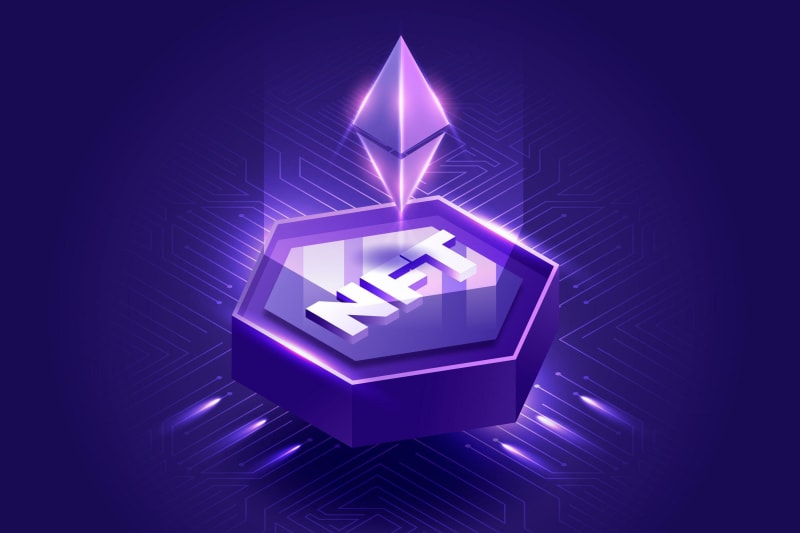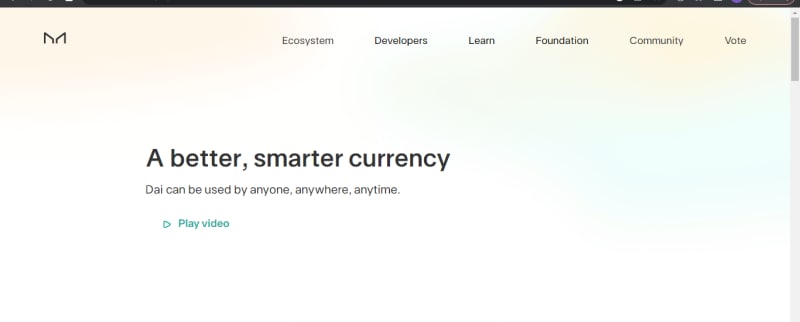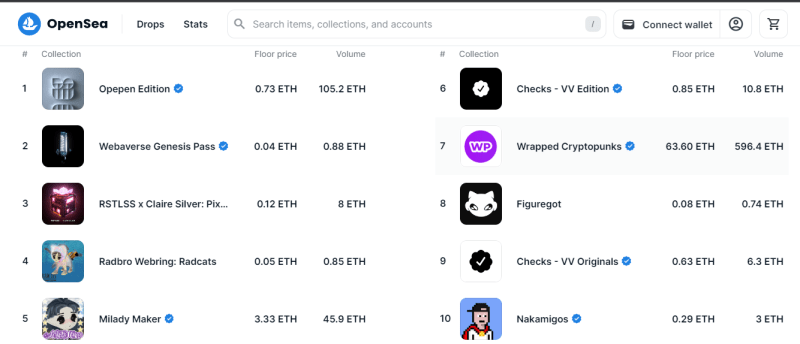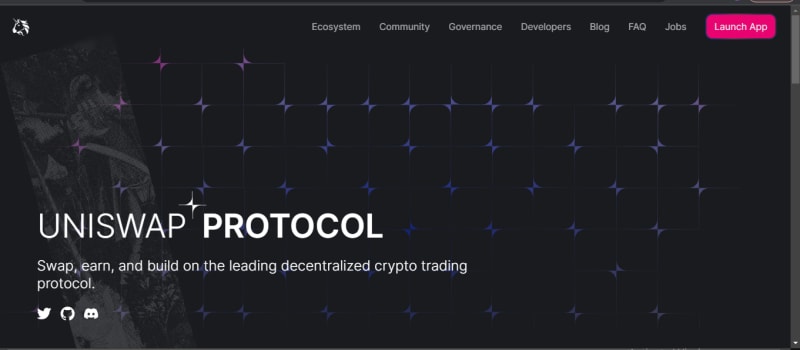The internet is rapidly evolving with advancements in technology, giving rise to Web3, a next-generation web concept. Web3 promotes user empowerment, control, and ownership in the digital realm through principles such as decentralization, peer-to-peer networks, cryptography, and blockchain. This opens up new opportunities for web development, including dApps, DeFi, NFTs, DID, and smart contracts.
However, integrating Web3 technologies into traditional web projects is a complex task. It requires developers to shift their mindset and approach to application development. Understanding the benefits, challenges, and potential of Web3 technologies is essential, as they can enhance or replace existing web solutions.
This article explores case studies that showcase successful integration of Web3 technologies in traditional web projects. By analyzing the integration methods, outcomes, and best practices from these projects, developers can gain insights and inspiration for incorporating Web3 technologies in their own endeavors.
Integration of Decentralized Finance (DeFi) into Traditional Web Development
Decentralized finance (DeFi) has emerged as a groundbreaking application of Web3 technologies, offering a range of financial services on blockchain platforms. These services include lending, borrowing, trading, investing, and insurance. DeFi's core objective is to provide accessible, transparent, and efficient financial solutions to users, eliminating intermediaries and centralized authorities.
An illustrative example of integrating DeFi protocols into a traditional web development project is MakerDAO. MakerDAO facilitates the creation and management of a stablecoin named DAI, which is pegged to the US dollar. Users generate DAI by collateralizing assets like ETH or other tokens within smart contracts called Vaults. Additionally, users can borrow DAI from peers, with interest rates determined by supply and demand. DAI finds utility in diverse scenarios, such as payments, savings, or trading.
MakerDAO's DeFi functionality harnesses various Web3 technologies. Firstly, it utilizes Ethereum as its underlying blockchain platform, ensuring smart contract security, scalability, and interoperability. Secondly, it leverages IPFS (InterPlanetary File System) as a decentralized storage system, enabling file storage and access without reliance on centralized servers. Lastly, it integrates MetaMask, a web3 browser extension, empowering users to interact with Ethereum dApps, manage accounts, and conduct transactions seamlessly.
Integrating DeFi protocols into MakerDAO yields significant benefits for users and developers alike. Users gain access to a stable and decentralized alternative to fiat currencies, safeguarded against inflation, censorship, or manipulation. Furthermore, it grants users broader financial opportunities and freedom, unhindered by intermediaries or barriers. For developers, this integration encourages a modular and composable web development approach, facilitating the utilization of existing DeFi protocols while constructing new ones atop them.
Several lessons learned and best practices have emerged from integrating DeFi protocols into traditional web development projects:
Balancing decentralization and usability: Understand the trade-offs between decentralization, which enhances security and transparency, and usability, which impacts user experience. Strive to strike a balance by designing intuitive interfaces and workflows for DeFi applications.
Leveraging existing tools and frameworks: Simplify the integration process by utilizing established tools and frameworks tailored for Web3 development. Truffle, Hardhat, and Remix, among others, facilitate the creation and deployment of smart contracts. Likewise, web3 libraries and APIs like Web3.js or Ethers.js facilitate seamless communication between web applications and blockchain platforms.
Rigorous testing and smart contract auditing: Given the immutability of smart contracts once deployed on the blockchain, comprehensive testing and auditing are imperative. Prioritize thorough testing using tools such as Ganache or MythX to identify and address any bugs or vulnerabilities before deploying smart contracts on the mainnet.
By embracing these insights and adhering to best practices, developers can seamlessly integrate DeFi protocols into traditional web development projects, unlocking the transformative potential of decentralized finance.
Implementation of Non-Fungible Tokens (NFTs)

Non-fungible tokens (NFTs) represent a compelling application of Web3 technologies, offering unique and indivisible digital assets that denote ownership and provenance across various content categories. These include art, music, games, and collectibles. NFTs are created and traded on blockchain platforms like Ethereum or Polygon, employing smart contracts and standards such as ERC-721 or ERC-1155.
OpenSea serves as an exemplary instance of a traditional web development project incorporating NFT functionality. OpenSea enables users to create, explore, and trade NFTs across diverse categories and blockchain networks. Users can browse and purchase NFTs from fellow users, while also leveraging OpenSea's tools to build their own NFT collections. Furthermore, users have the ability to participate in auctions, offer bundled NFTs, and create personalized storefronts.
OpenSea seamlessly integrates several Web3 technologies to facilitate its NFT functionality. Firstly, Ethereum serves as the principal blockchain platform, ensuring secure NFT smart contract deployment and interoperability. Secondly, Polygon is utilized as a sidechain solution, providing faster and more cost-effective transactions within the NFT marketplace. Lastly, WalletConnect acts as the web3 wallet integration, enabling users to connect their mobile wallets to OpenSea's web application.
The integration of NFT functionality within OpenSea yields numerous benefits and outcomes for both users and developers. Users gain an avenue for expressing their creativity and identity through digital assets, alongside new opportunities for income generation and value creation. Additionally, users benefit from increased diversity and choice, accessing NFTs spanning various categories and networks. Developers benefit from a more scalable and flexible web development approach, capable of supporting multiple NFT standards, platforms, and integrations with other NFT applications.
When implementing NFT functionality within traditional web development projects, several key lessons and best practices have emerged:
Comprehensive understanding of legal and ethical implications: Developers must grasp the legal and ethical considerations associated with NFTs. Intellectual property rights, royalties, taxation, and environmental impact are some of the crucial issues at play. Consulting with experts or relevant authorities prior to launching NFT applications is essential. Respecting the rights and preferences of original creators and content owners is paramount.
Utilize existing platforms and protocols: Building NFT platforms or protocols from scratch is unnecessary. Developers can leverage established platforms and protocols that offer ready-made infrastructure and tools for NFT creation and trading. Examples include OpenSea, Rarible, or Mintable. Likewise, incorporating existing NFT standards and libraries, such as ERC-721 or OpenZeppelin, streamlines the creation and management of NFT smart contracts.
Test and optimize performance and user experience: NFT applications often face performance and user experience challenges, such as high gas fees, slow transactions, or complex workflows. Developers should rigorously test and optimize their NFT applications to ensure a seamless and satisfying user experience. Exploring sidechain or layer 2 solutions like Polygon or Optimism can enhance transaction speed and cost efficiency.
By embracing these lessons and adhering to best practices, developers can successfully implement NFT functionality within traditional web development projects, harnessing the transformative power of non-fungible tokens.
Implementing Smart Contracts
Smart contracts serve as vital components of Web3 technologies, offering self-executing and immutable programs that operate on blockchain platforms like Ethereum or Solana. These contracts encode and enforce various logic, rules, and agreements, encompassing payments, escrows, voting, governance, and more. Additionally, they possess the ability to interact with other smart contracts or external data sources such as oracles or APIs.
An excellent example of a traditional web development project incorporating smart contracts is Uniswap. Uniswap facilitates token exchanges on Ethereum without intermediaries or order books. Users can effortlessly swap any two tokens via Uniswap's liquidity pools, established and funded by fellow users. Moreover, individuals can contribute liquidity to these pools and earn fees from transactions.
Uniswap's implementation involves several Web3 technologies to enable smart contract functionality. Firstly, it employs Solidity as the smart contract programming language, widely recognized and supported within the Ethereum development community. Secondly, it adopts Uniswap V2 as the smart contract protocol, offering upgrades and enhancements like flash swaps, price oracles, and routing. Lastly, it utilizes Infura as its web3 infrastructure provider, granting users access to Ethereum nodes and APIs without the need for personally maintaining nodes.
By incorporating smart contracts, Uniswap has brought forth numerous advantages for its users and developers. Users benefit from a more efficient and decentralized token exchange system on Ethereum, bypassing centralized exchanges and intermediaries. Furthermore, they can seize opportunities to provide liquidity to pools and earn fees from transactions. For developers, this approach fosters innovation and composability, empowering them to build new applications and integrations on top of Uniswap's smart contract protocol.
When implementing smart contracts in traditional web development projects, it is essential to consider the following lessons learned and best practices:
Understand the security and reliability risks associated with smart contracts. Awareness of vulnerabilities like reentrancy, overflow, or logic bugs is crucial. Developers should adhere to best practices when coding secure and reliable smart contracts. Leveraging tools and frameworks such as Slither, Echidna, or Manticore can aid in preventing, detecting, and rectifying such issues.
Leverage existing standards and patterns to simplify the implementation process. Developers need not reinvent the wheel. By utilizing established standards and patterns like ERC-20 for fungible tokens, ERC-721 for non-fungible tokens, or OpenZeppelin for security and utility libraries, they can access common and reusable functionalities. Similarly, incorporating existing patterns and design principles such as the factory pattern, proxy pattern, or upgradeability pattern can enhance the quality and maintainability of smart contracts.
Conduct thorough testing and careful deployment of smart contracts prior to launch. Deploying smart contracts on the blockchain is an irreversible process. Consequently, any mistakes or modifications can have serious ramifications for users and developers alike. To mitigate risks, developers should rigorously test their smart contracts using tools like Ganache or Hardhat Network before deploying them on the mainnet. Employing secure and efficient deployment tools and services such as Truffle or Remix is also advisable.
Conclusion
This article provides an overview of integrating web3 technologies into conventional web development projects. It explores decentralized finance, non-fungible tokens, and smart contracts as transformative elements in web development.
The integration of Web3 is not solely a technical hurdle; it necessitates a cultural and conceptual shift in mindset for developers and users accustomed to traditional web paradigms. It demands an open-mindedness to experiment and embrace the myriad possibilities and opportunities presented by Web3 technologies.
Image by pikisuperstar on Freepik











Top comments (0)